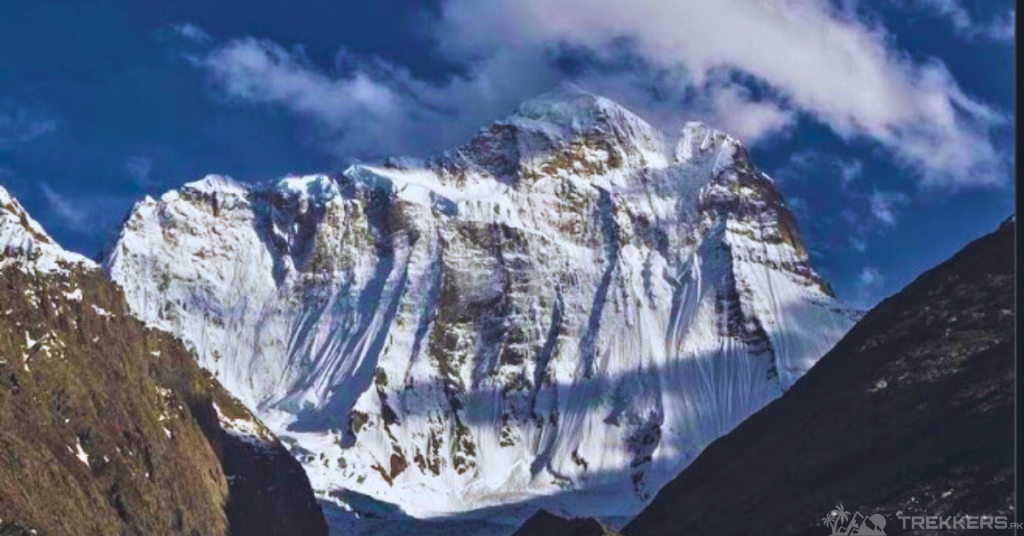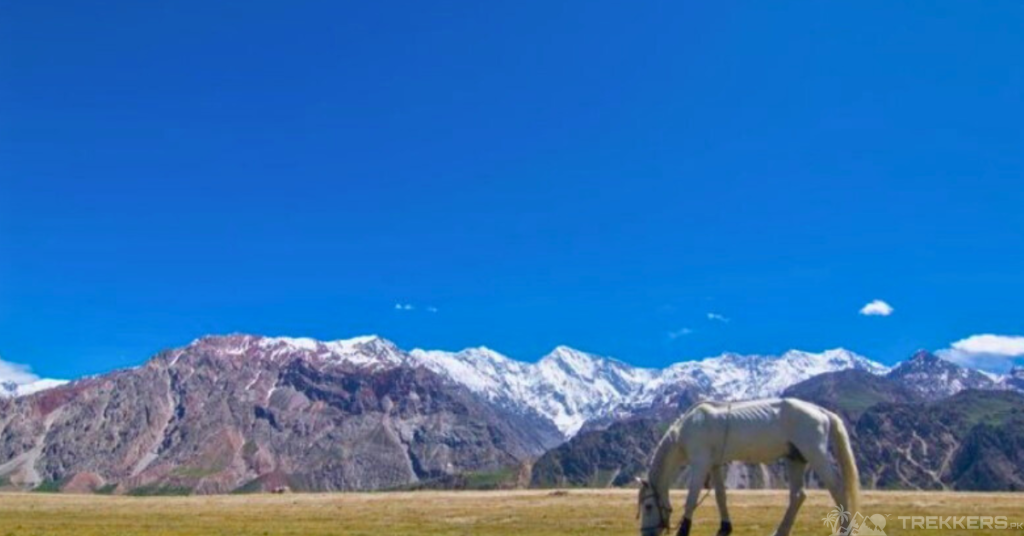Traversing through the breathtaking Hindu Raj Range and exploring the extraordinary beauty of this unappreciated range.
Ever since my memory hit the play button, I’ve been hitched to the enthralling drama of Pakistan’s mountain ranges—like a mountaineer to his favorite peak, an affair of peaks and unending allure. They are different from ranges all around the world, with complex routes, unmatched scenery, and besides everything a great experience. Not only the natural diversity, Pakistan’s mountain ranges Karakoram, Himalayas, Hindu Raj Range and Hindukush, all are incredibly diverse.
Though climbing The mountains located in these ranges is not an easy task, making it to the top of a mountain in Pakistan is a feeling that words cannot describe.
Climbing all the named mountains in Pakistan is one of the biggest goals I have set for myself. During my Hindukush range excursions, I found out about the enchanting Hindu Raj Range. The range is not as popular as the big three in Pakistan but possesses some of the most majestic mountains of Pakistan.
Here is all you need to know about the Hindu Raj Range before planning a trip to the beautiful mountains located in the range.
The Hindu Raj mountain range nestles itself between the Himalayan and Hindu ranges, as well as Gilgit-Baltistan and Chitral. The breathtaking range is located south of the Pamir Mountains and east of the Hindukush mountain range.
Other than the people who are oblivious to the existence of the incredible range, some people consider the Hindu Raj Range to be a part of the Hindukush range. Many geographers disagree with this statement and have claimed Hindu Raj to be its range.
The mountain range supposedly derives its name from a Hindu ruler who once governed the region, although this information is merely speculative. The historical aspect of this range was also one of the reasons why I wanted to visit the range.
Historical And Cultural Background of The Hindu Raj Range:
Other than the speculation about the mountain range being named after the Hindu rulers there are some other rumours about it too. The Hindu Raj mountain range is also said to be in the same vicinity as the homes of the Kalasha people, and the name is a reference to their ancestors.
The Hindu Raj mountain range also is culturally significant. “Batholight Saltoro” notes a diverse linguistic mix: Shina, Burushaski, Khowar, Gujar, and Wakhi speakers, reflecting complex history. The range was ruled by different dynasties from Chitral, Gilgit, Srinagar, Tibet, and Persia, showcasing its rich historical diversity.
The language spoken by the inhabitants of the eastern valleys near the Hindu Raj Range is Burushaski. It is said to be the purer version of the language spoken in Hunza.
Being a connoisseur of history myself, and keen to explore different cultures all around the world, the Hindu Raj Range piqued my interest. I was eager to experience the rich culture and witness the beauty of the range by myself.
My Journey to the Hindu Raj Range:
Getting a permit has always been one of the toughest parts of my trips. This time too, our trip got delayed by a month because we could not get a hold of our permit. After trying everywhere we finally were ready to fly to the land of the pure, Pakistan.
My friends and I, all packed our bags and booked the earliest flight. Once we landed in the capital of Pakistan, Islamabad, the first thing we did was check ourselves into our hotel. Though our stay there was brief, we made some unforgettable memories there and enjoyed every second of our time in Islamabad.
From Islamabad, we rented a jeep for our 10-hour drive to the Chitral district. The drive was long and quite tiring but the landscape and architecture we witnessed along the way was incredibly beautiful and made our drive bearable.
After staying in Chitral for a day and exploring the vibrant local markets of the district, we abandoned our car there and started our trekking journey. Our trek continued for five days until we finally arrived in the beautiful Hindu Raj Range.
At first glance, the mountain range took our breaths away. The towering peaks extending to the sky surrounding us made everything look magical. We had the privilege to climb and trek up some of the popular peaks of the range such as Koyo Zom, Buni Zom, Ghamubar Zom, and Gul Lasht Zom. Koyo Zom is the highest peak at an elevation of 6,872 meters.
Koyo Zom:

My friends and I, all decided to first attempt the highest peak of the range, Koyo Zom. We chose to trek to the base camp of the peak. We started our trek from the Brep Village in Yarkhun Valley. Our five-day trek led us through some of the most beautiful remote villages I have ever had the privilege to witness. We also passed lush green meadows and forests that offered an extraordinary view of the surrounding mountains. After a pleasurable walk, we were finally at the Koyo Zom base camp at 4,100 meters. The stunning view of the Koyo Zom glacier made our journey more memorable than it already was.
Buni Zom:

Perched at an impressive height of 6,611 meters, Buni Zom is one of the more complex mountains to climb in the range. The peak is located on the border of Pakistan and Afghanistan and is a part of the Chiantar Glacier. To climb the breathtaking peak, we chose to climb the mountain from the Southwest Ridge. Our climb started from the Buni Zom Glacier.
The ascent was full of obstacles but making it to the top and witnessing the incredible view from the summit made all of the struggles worthwhile. The descent was also quite a challenge but the feeling of accomplishment made the journey back much more delightful.
Ghamubar Zom:

Our next destination was the 6,834-meter peak. Climbing the Ghamubar Zom was a thrilling adventure. Our first step into this adventure was to trek to breathtaking Ishkoman Valley. From the valley, we made it to the base camp. The ascent to the summit was gradual with several steep sections and exposed ridges.
In the shadow of surrender, a mere breath away from the summit, exhaustion and sleep deprivation threatened to overcome me. Yet, fueled by the unwavering support of my teammates, I found the strength to press on. Staying committed to my climb proved a wise choice, as the mesmerizing view effortlessly eclipsed the challenges of the ascent. The view was completely entrancing with glaciers and neighboring mountains surrounding us. After taking in the overwhelming scenery, we made our way down and celebrated our journey by having Pakistani food.
Gul Lasht Zom:

Though our journey exceeded my expectations and I enjoyed every second of it, our ascent to Gul Lasht Zom was one of my favorite memories of this trip. The 6,379-meter mountain is the region’s most prominent peak. We opted for the southeast ridge route for our journey. Our ascent started from the Chianter glacier. We had to be sure-footed at every step to prevent an injury in the incredibly tricky route.
The ascent was progressively getting harder but we were determined and prepared for everything coming our way. Finally reaching the summit, I was ecstatic about successfully climbing all of these beautiful mountains in the range. Neighboring mountain ranges, valleys, and distant peaks embrace me, and this sensation will forever engrave itself in my mind.
Conclusion:
After exploring a major part of the beautiful Hindu Raj range and climbing some of the more notable peaks of the range, we decided to go back home. This trip turned out to be a great experience and helped us learn a lot of new skills and about the topography of Pakistan.
It made us more confident about our future excursions. The incredible view and rich culture so fascinated me and I will visit the enchanting Hindu Raj Range again.